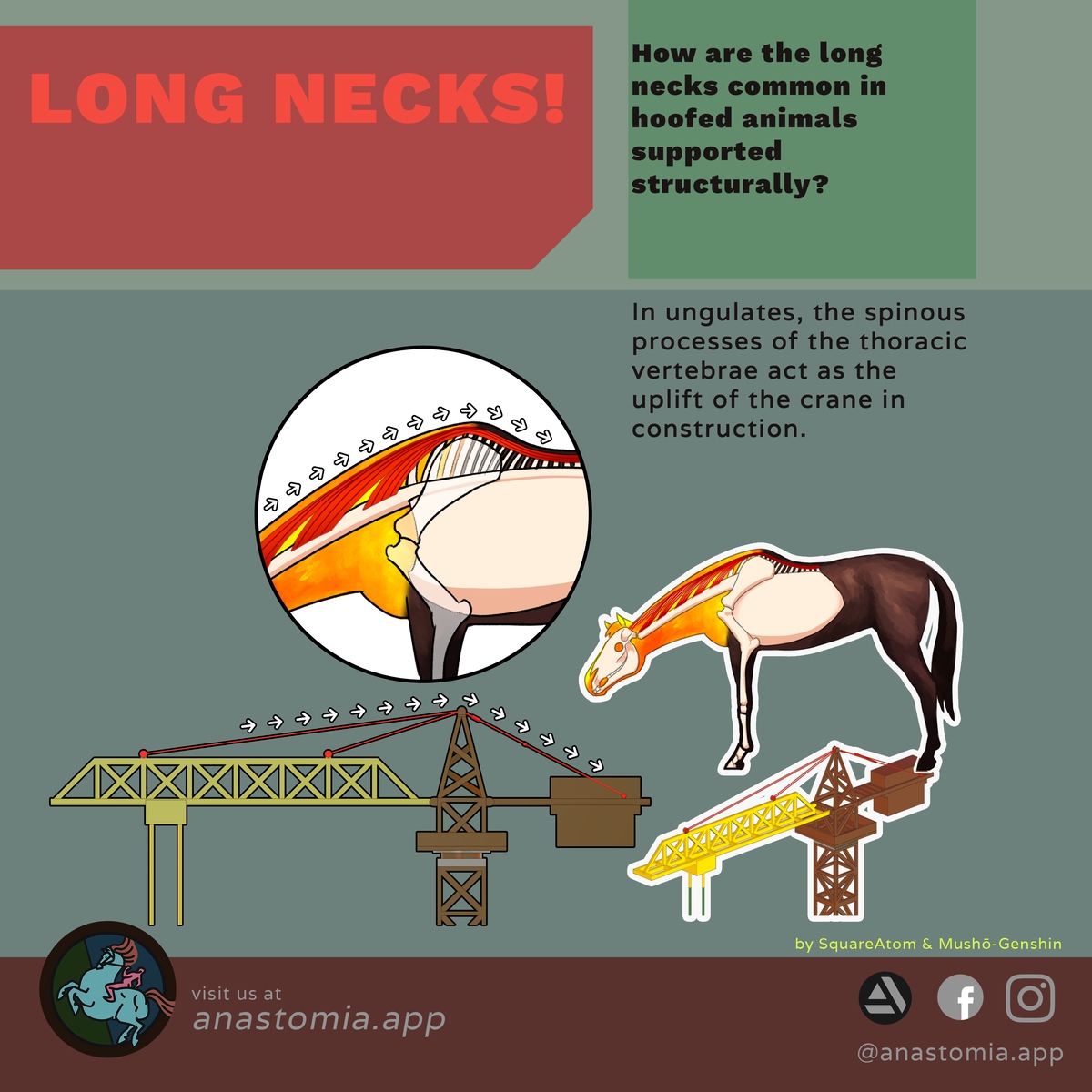Crane-like Structure in Long Neck Designs
August 1, 2021
Function of the extreme design of the thoracic spinous processes in hoofed animals

In order to make sense of the seemingly gravity-defying long neck designs of many herbivorous animals, we need to understand the adaptation of those spinous processes at the adjacent area between their neck and their ribcage: these bony projections are extremely elongated in hoofed animals in a way that if you look back at that respective area in humans, our spinous processes look like wimps – oh you gotta see this image of an Indian gaur skeleton in this post and take notes at its impressive thoracic spinous processes to get the whole picture 😉:

Gaur skeleton image by Ryan Somma at Wikimedia.
This knowledge will be easier to retain once you realize that these structures essentially serve as the uplift of a crane in (mankind’s) construction, while the nuchal ligament is responsible to bind all the processes together (as well as the occipital protuberance) in a sturdy yet flexible manner!